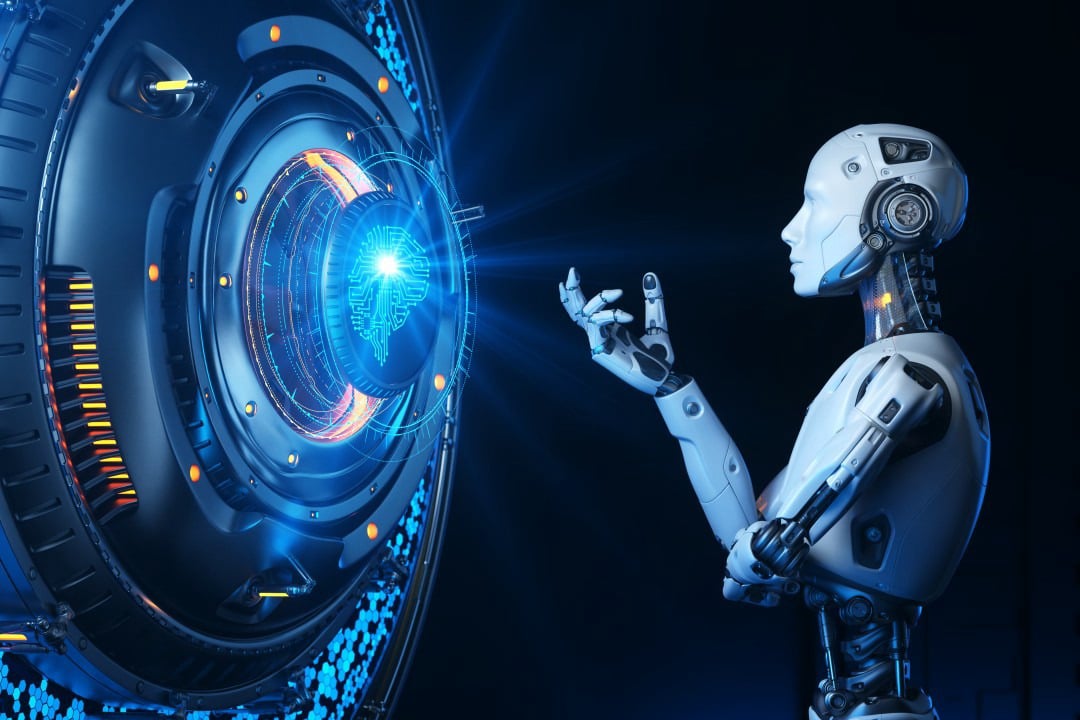

According to published reports and statistics, the number of industrial robots in the world will reach 3.4 million by 2024. There is an estimated one robot for every seven humans, and these robots have taken over approximately 14% of the jobs in the world that were previously held by humans. Reports also indicate that 90% of commercial establishments of all types plan to use robots in their operations, based on statistics published by the Coolest-Gadgets website in a study titled “Robots Statistics 2024 By Revenue, Usage and Companies.” Here, we need to point out that the robotics sector predates artificial intelligence. Robots first appeared in their mechanical form—without the integration of electronics and software—in 1495 AD, in the form of a fighting knight capable of performing certain mechanical movements, invented by Leonardo da Vinci. In 1785, Edmund Cartwright invented a water-powered loom, which was considered—at the time—a type of robot, given its significance in transforming industry. These estimates and reports confirm that we are witnessing a rising wave of scientific progress related to robotics, and that we are heading towards a future where industry and business in general flourish, while at the same time, unemployment rates among humans rise. This presents us with challenges that require solutions that satisfy everyone. We must ensure the safe and beneficial flow of technologies, including robotics, and guarantee the human right to work. This prompts us to consider more advanced solutions related to the direction of education and its specializations, appropriate for future generations who need to reposition themselves in the labor market. First and foremost, we need to understand what we mean by robots, both their ancient and modern working mechanisms, their current and future functions in the workplace, and identify the risks associated with the encroachment of robots into the world of business and industry, as well as the possible solutions.
What are robots and how do they work?
There is a science called robotics, a field interconnected with other disciplines, that focuses on the design, manufacture, and operation of robots. Technically, robots are machines that perform traditional tasks that mimic those performed by humans. The first robots were simple mechanical systems designed to perform repetitive industrial tasks such as factory automation, including welding, assembly, and sorting.
In their early days, these machines were limited in their capabilities, subject to the laws of static mechanics, lacking the true ability to make decisions or adapt to changing environments. The basic components of these early robots included motors that allowed them to move, sensors that provided basic environmental feedback, and a mechanical structure, often consisting of mechanical arms that could move within mathematical limits and specific angles appropriate to their assigned function. Control systems were primitive and often relied on fixed physical logic that lacked the ability to interact with or process any data from the external environment. This limited the functionality of these machines to repetitive tasks, making them unsuitable for complex or dynamic environments.
Over the years, robotics has advanced significantly, and modern robots now integrate advanced technologies such as artificial intelligence, microelectronics, and advanced sensors.
These developments have enabled robots to transition from simple automation to more seamless interaction with their external environment and to make quick and intelligent decisions. For example, robots today are equipped with systems such as LiDAR, radar, and advanced cameras, giving them precise perception of the external environment and its changing conditions. Combining robots with artificial intelligence and machine learning algorithms allows them to learn from past experiences to improve their ability to perform complex tasks such as autonomous navigation and interact in a human-like manner. Robots used in fields such as healthcare, agriculture, and logistics are now capable of performing challenging tasks such as surgery, harvesting crops, and managing warehouses autonomously without human intervention, a reflection of the progress of this field.
Modern robots with intelligent digital systems interact with sensors, process the transmitted data, and implement actions. Sensors collect data from the environment, which is then processed by algorithms that often rely on artificial intelligence to make appropriate decisions. These decisions are translated into actual movements via motors, enabling the robot to move or address problems according to its algorithmic controls. Think of smart vacuum cleaners equipped with sensors to detect obstacles and dirt. To collect and process environmental data to map the location and adjust their path based on new variables and data. In another example, robots used in warehouses collect data related to their environment, identify elements and objects within that environment, and then efficiently transport them to designated locations.